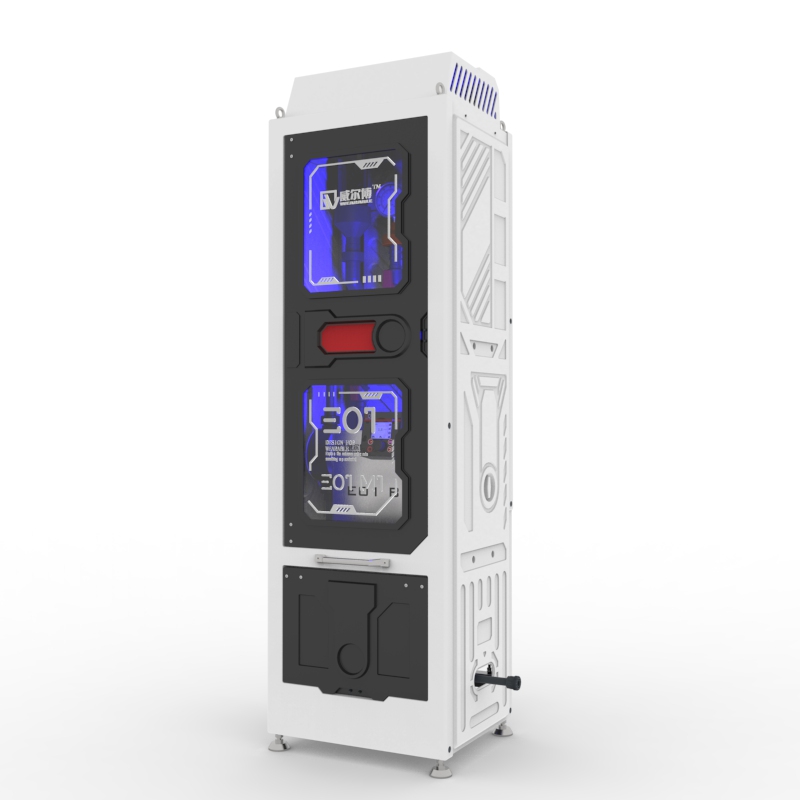How Digital Pump Systems Work and Why They Matter
The digital dosing pump systems have emerged to assist precision-based industries. Other industries such as energy production, chemical manufacturing and water treatment have integrated automation systems, which introduced real-time dosing monitoring to flow management, which allowed engineers to approach dosing challenges from a completely different angle. Processing engineers now enjoy automation with flexibility and accuracy while using digital dosing pumps. In this article, we will focus on the significance of digital dosing pumps, describe their systems, effective methods and models of their usage, and their importance in industrial operations.
How Do Digital Pump Systems Work?
Digital dosing pumps systems comprise of electronic pumps which are controlled by a micro processor and are made to inject different additives into a certain fluid stream. More often than not, these systems contain a metering unit activated by a stepper or servo motor which is a diaphragm. The pumps, which are digitally controlled, eliminate the issues of variation in accuracy and repeatability since they make the stroke control more precise.
The dosing process starts with the dosing pump being triggered by a control signal to the actuator, which can be in the form of manual settings, SCADA, PLC remote control, or feedback loops using advanced sensors such as flow or pH meters.
The pump then calculates the exact volume to be delivered based on pre-programmed parameters such as concentration, flow rate, or dosing interval. Advanced models allow dosing rates to be adjusted dynamically in real time, responding to changing system conditions.
Key internal components typically include:
Servo or Stepper Motor: Enables variable stroke length and speed for precision control.
Diaphragm and Head Assembly: Forms the dosing chamber; typically made from corrosion-resistant materials such as PTFE or PVDF.
Control Interface: Allows programming of dosing mode, volume, frequency, and other parameters.
Sensors: Pressure, flow, bubble, or blockage sensors can be integrated for real-time diagnostics.
The result is a pump system that not only delivers fluid with extreme accuracy but also continuously monitors and adapts to ensure optimal performance. Most importantly, it does so with minimal manual intervention.
How to Use a Digital Pump System
Operating a digital dosing pump system involves three primary stages: installation, configuration, and ongoing monitoring. Thanks to modular design and intuitive interfaces, modern systems can be deployed with minimal training.
1. Installation
Most digital pumps are designed for plug-and-play installation. Mounting can be wall-based, floor-mounted, or rail-attached depending on the environment. The fluid lines—suction and discharge—must be securely connected, and the pump should be primed to remove any trapped air. Electrical connections include power supply and signal lines for remote control, alarm relays, or sensor inputs.
2. Configuration
Once installed, the system is configured via a digital interface or touchscreen. Common settings include:
Manual Mode: Set a fixed flow rate manually.
Batch Mode: Deliver a specified volume per activation cycle.
Pulse or Impulse Mode: Dosing triggered by external pulse signals (e.g., water meter).
Proportional Mode: Flow is adjusted based on real-time sensor feedback.
Timed Mode: Start/stop dosing at pre-set intervals.
Most systems also allow calibration routines to fine-tune dosing accuracy based on real-world measurements.
3. Monitoring and Adjustment
Digital pumps offer continuous condition monitoring. Parameters such as pressure, flow rate, and diaphragm status can be viewed in real time. Alerts notify operators of anomalies like gas bubbles, blocked discharge lines, or low chemical levels. Systems can be integrated into remote control platforms for mobile monitoring and auto-adjustment.

How to Select the Right Digital Dosing Pump
Choosing the correct digital dosing pump depends on several factors:
1. Chemical Compatibility
When selecting a digital dosing pump, ensuring compatibility between the pump’s wetted components and the chemical being dosed is one of the most critical considerations. The pump head, diaphragm, seals, and valves must all resist degradation when exposed to the target fluid—whether it's a strong acid, base, oxidizer, or solvent.
For instance, chemicals such as sodium hypochlorite (NaOCl) can degrade many metals and elastomers over time, especially when exposed to light. Therefore, non-metallic, UV-stable materials such as PVDF (polyvinylidene fluoride) or PTFE (polytetrafluoroethylene) are recommended. Similarly, highly aggressive acids like sulfuric or nitric acid require chemically inert pump head materials such as PTFE or coated stainless steel to ensure safe operation and long service life. Failure to match the chemical and material properties can lead to rapid corrosion, leakage, and dangerous operating conditions.
2. Flow Rate and Pressure
Every application has unique flow and pressure requirements. A digital dosing pump must be capable of delivering the desired flow rate—typically measured in mL/min, L/h, or GPH—within the expected back pressure range of the system.
Flow rates can vary significantly depending on whether the system is dosing a high-volume disinfectant or a precise pharmaceutical reagent. Many digital pumps provide wide turndown ratios—commonly between 1:100 and 1:1000—allowing operators to adjust the output over a broad range without compromising accuracy.
3. Accuracy Requirements
Not all dosing applications demand the same level of accuracy. In some industrial cleaning or cooling tower applications, a deviation of a few percent may be acceptable. However, in industries such as pharmaceuticals, biotech, semiconductors, or microelectronics, dosing accuracy is mission-critical.
For such cases, digital dosing pumps with ±0.3% or better accuracy are recommended. These pumps typically utilize stepper motors or servo motors instead of solenoids, allowing for highly repeatable stroke lengths and minimal variation even under dynamic conditions. Accuracy also depends on how well the system is calibrated and whether it incorporates real-time monitoring of flow and pressure.
For facilities aiming to reduce waste, meet regulatory standards, or maintain product integrity, investing in a high-accuracy pump model is essential.
4. Control Options
Modern process environments increasingly demand smart integration. Digital dosing pumps must be able to communicate with external control systems, enabling automation, remote control, and system feedback.
Many pumps support standard communication protocols such as 4-20 mA analog signals, Modbus RTU/TCP, Profibus, or Ethernet/IP. These interfaces allow the pump to receive real-time instructions from a PLC, DCS, or SCADA system, or to transmit alerts and performance data for condition-based maintenance.
Some applications also require pulse input compatibility, allowing the pump to synchronize with external flow meters or batch controllers. Advanced control options enable functions such as flow-proportional dosing, pH-based control, and batch scheduling.
5. Environmental Conditions
A pump’s performance and longevity are heavily influenced by the operating environment. Key considerations include:
Ambient temperature: Exposure to extreme heat or cold can affect electronic components, motor performance, and diaphragm flexibility.
Humidity or condensation: High-moisture environments may require sealed enclosures to prevent corrosion or electrical failure.
Dust or chemical vapors: Pumps installed in chemical plants or dusty production floors should have appropriate IP-rated enclosures (e.g., IP65 or higher).
Explosion-prone areas: In zones where flammable gases or dust are present, pumps must comply with ATEX or other explosion-proof standards.
Outdoor use: Requires UV protection, temperature control, and weather-sealed enclosures.
Neglecting to match the pump’s environmental protection to the site conditions can lead to degraded performance, safety hazards, or non-compliance with industry regulations.
Advantages of Digital Dosing Pump Systems
The transition from manual or analog systems to digital dosing technology offers a host of operational advantages:
1. High Precision and Repeatability
Microprocessor control and electronic actuation mean dosing is accurate to within fractions of a percent. This is crucial for applications requiring exact chemical ratios.
2. Pulse-Free Flow
Unlike peristaltic or solenoid pumps, digital dosing pumps driven by servo motors can provide nearly continuous, non-pulsating flow. This ensures stability in downstream reactions or processes.
3. Condition Monitoring and Diagnostics
Real-time monitoring of pressure, flow, and diaphragm status allows operators to detect issues early, minimizing downtime and chemical waste.
4. Automation and Integration
Seamless integration with sensors, water meters, and PLCs reduces human error and enables adaptive dosing strategies.
5. Energy and Chemical Efficiency
Accurate dosing reduces overuse of chemicals, protecting equipment and lowering operational costs.
6. Ease of Maintenance
Most systems are modular, with replaceable wear components like diaphragms and valves. Maintenance reminders and failure alarms improve reliability.
Where Digital Dosing Pumps Are Used
These systems find application across a wide range of industries:
Water and Wastewater Treatment: For precise injection of chlorine, coagulants, and pH adjusters.
Food and Beverage: For dosing of flavorings, preservatives, and sanitation chemicals.
Chemical Manufacturing: For batch or continuous injection of catalysts, inhibitors, and neutralizers.
Power Plants: For dosing anti-scalants, oxygen scavengers, and boiler treatment chemicals.
Automotive: For paint additive mixing and surface treatment.
Biotech and Pharma: For enzyme addition, buffer preparation, and sterile chemical delivery.
Agriculture: For fertigation and pesticide dosing.
Like other fluid control systems, digital dosing pump systems are now considered pivotal to the processes of an industry. Unlike other systems, however, these pumps offer precision, automation, and even perform self-diagnostic checks in an effortless manner and in an ergonomically compact design. With the shift towards smarter operations and more digital dosing technologies, these pumps offer industries, and even entire regions, a pathway to a more sustainable future.
While selecting and understanding the elements of these pumps, engineers must ensure improved reliability of the processes while focusing on the minimization of waste and enhancement of safety. Choosing the digital pump must guarantee the right investments are made. The pumps must guarantee the accurate overdosing of chemicals, and the pumps must guarantee the processes are digitized.


